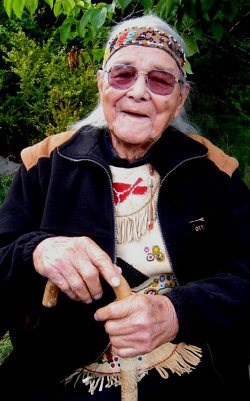NEWS RELEASE
UNION OF ONTARIO INDIANS ****************************** Anishinabek mourn passing of Grandfather William Commanda UOI OFFICES - (August 2, 2011) – Anishinabek Nation leaders are paying tribute to Grandfather William Commanda who passed into the Spirit World today. "He was a gift to the Algonquin people and an important figure for all First Nations people. It is a sad day when our elders pass and he will be remembered by many," said Grand Council Chief Patrick Madahbee.
He was born on Nov. 11, 1913, and named Ojigkwanong.
He was the great-grandson of Pakinawatik, a hereditary Algonquin chief from the mid-1800s who lead his people to settle in their current territory by Maniwaki, Que.
Commanda was the former chief of Kitigan Zibi and he held the position from 1951 to 1970.
It was his role as an Elder and spiritual leader, however, that he will most likely be remembered.
He rose to international prominence for his efforts at bridging the gap between cultures.
His travels took him all over the world, including to the United Nations.
In 1990 he was asked to bless the Human Rights Monument in Ottawa along with the Dalai Lama.
He also presented Nelson Mandela with an eagle feather in 1998 on behalf of First Nations people.
Commanda also received numerous awards and honours for his work, including being named as Officer of the Order of Canada, receiving the key to the city of Ottawa along with an honourary doctorate degree from the University of Ottawa and a lifetime achievement award from the National Aboriginal Achievement Awards Foundation.
Commanda is the carrier of three wampum belts of historic and spiritual importance: the Seven Fires Prophecy Belt – which represents choice, the 1700s Welcoming Belt – which represents sharing our grand natural resources and values of the First Peoples with the newcomers and the Jay Treaty Border Crossing Belt – which recognizes Turtle Island as a coherent entity. The Anishinabek Nation established the Union of Ontario Indians as its secretariat in 1949.
The UOI is a political advocate for 39 member communities across Ontario, representing approximately 55,000 people.
The Union of Ontario Indians is the oldest political organization in Ontario and can trace its roots back to the Confederacy of Three Fires, which existed long before European contact.
******************************
